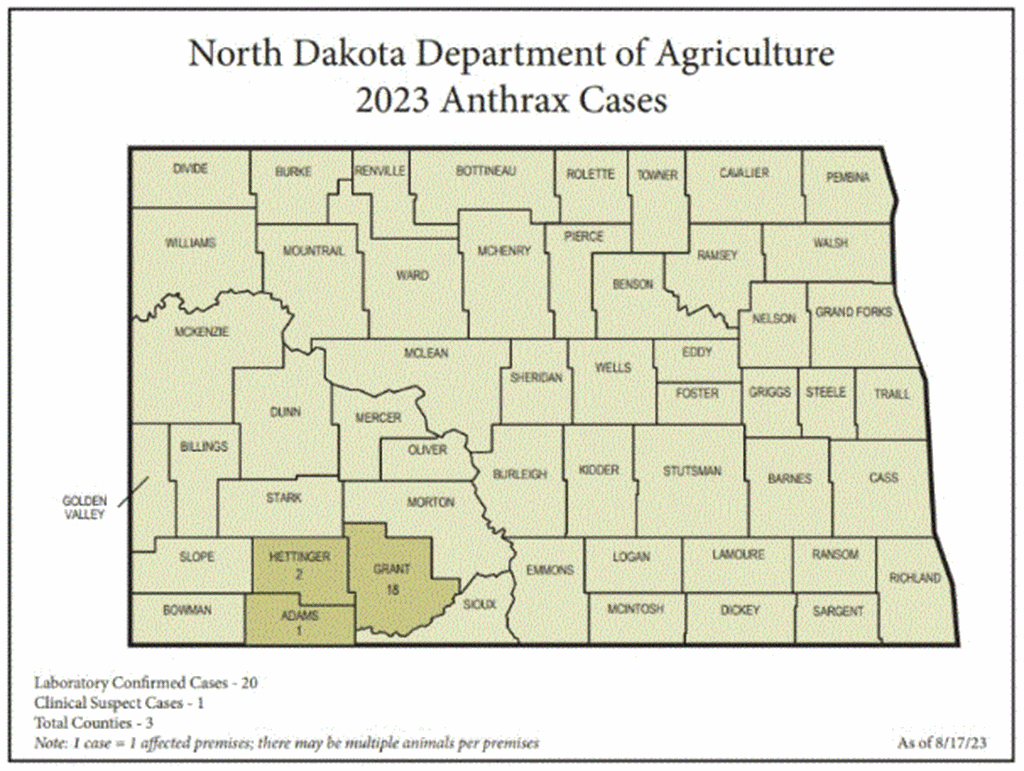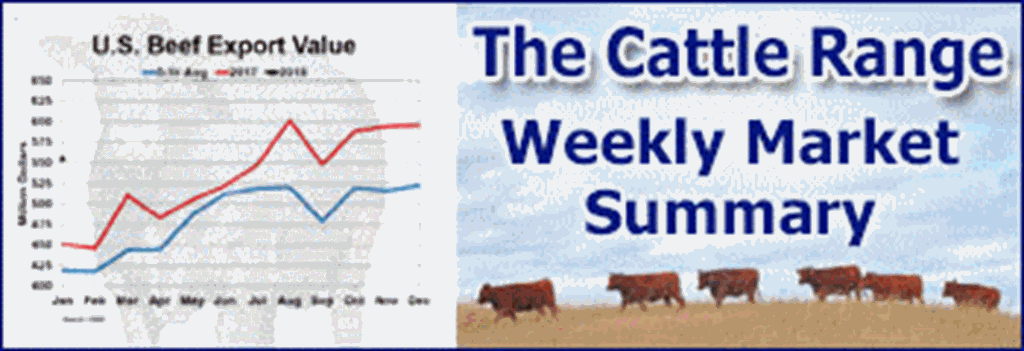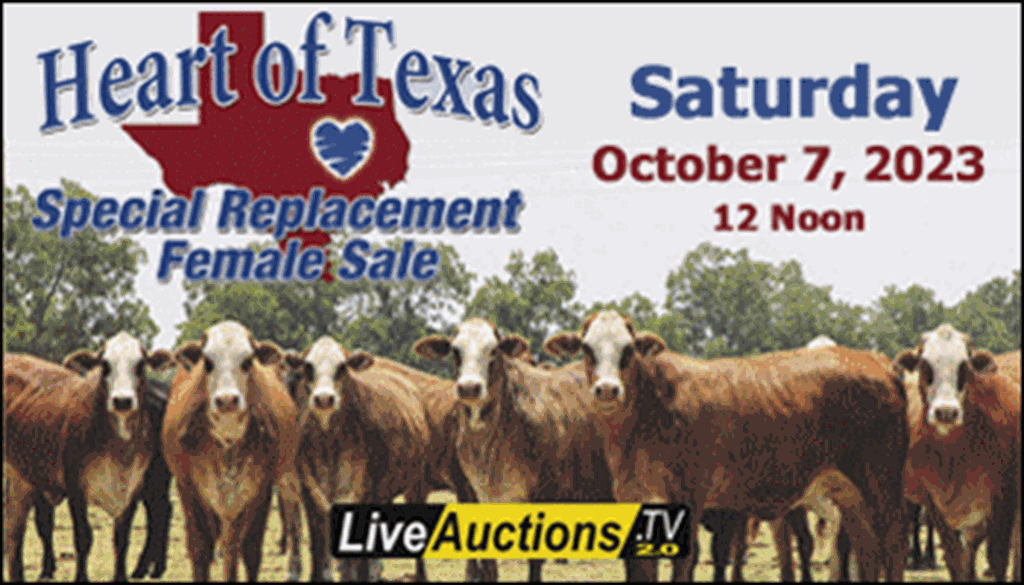HETTINGER COUNTY, ND — The North Dakota Department of Agriculture has confirmed three anthrax cases in beef cattle in southwest North Dakota, according to a report released Aug. 17. Two of the cases have been confirmed in Hettinger, with one additional case in Adams County.
The report detailed 37 cattle killed by the infectious disease, with estimates of the origins of the outbreak beginning in Grant County sometime in the beginning of August. The cases have since spread to the neighboring counties, highlighting what the Department of Agriculture says is an immediate need for awareness and preventative measures.
Anthrax, a bacterial infection, is associated with sudden and often fatal outcomes in cattle and other warm-blooded animals, including humans. This worldwide issue caught the attention of experts due to its potentially devastating impact on livestock and agriculture. One of the significant concerns surrounding anthrax is its resilience in the environment. The bacteria, known as Bacillus anthracis, can survive in surface soil for up to five years and even longer if buried deeper. Soil type plays a role in determining the longevity of the bacteria.
The vulnerability of cattle, bison and sheep to anthrax creates a challenging situation for North Dakota, a state known for its significant beef cattle population, totaling around 1.85 million. In fact, according to the North Dakota Department of Agriculture, there are nearly 2.5 cattle for every person in the state — with the numbers increasing in the rural southwestern portion of the state.
According to Dr. Ethan Andress, the State Veterinarian, the county’s response underscores what they see as the importance of vaccination, noting its effective preventive measure. Vaccines are not only accessible, but affordable, costing ranchers approximately $1 per dose.
It is important to note that the vaccine does require 5-10 days to become fully effective, and its immunity is expected to last about six months. As a result, revaccination protocols are necessary. Ranchers are advised to consult with veterinarians to determine appropriate vaccination protocols and availability that align best with their specific circumstances.
Beyond vaccination, fly control measures are strongly recommended due to the role of biting flies in spreading anthrax. Implementing various modes of action for fly control can help reduce the risk of transmission. The primary means of transmission of anthrax is through consumption, infected blood or inhalation of spores in dirt and dust.
Andress highlighted the collaborative process between those raising livestock and the local veterinarians in responding to anthrax cases.
"Generally, what we're seeing is when we people come out and find an animal that has passed, they contact their veterinarian, and then based on what the veterinarian sees, they'll make decisions on whether they want to get in and vaccinate that group right away or wait for the results,” Andress said. “Sometimes they end up using antibiotics as well if there's an active infection going on in the pasture. The vaccination and antibiotics will be coordinated with them and their veterinarians."
Ranchers are urged to contact their veterinarian and the North Dakota Department of Agriculture's Division of Animal Health in the event they suspect anthrax in their livestock. In such instances they are asked to obtain and submit a blood sample for testing.
It's important to note that performing autopsies or cutting open deceased animals should be strictly avoided, as such actions can lead to the spread of anthrax spores. This caution extends to any instances of animal loss.
The process of handling an anthrax-infected carcass is complicated. Proper disposal and disinfection are essential to preventing further contamination and spread. Ideally, incineration is the preferred method of carcass destruction. If incineration isn't feasible, burying the carcass at a depth of at least six feet is considered an acceptable alternative — but it is important to note water tables in the area as to avoid contaminating subsurface water.
Andress also highlighted the evolving practices in carcass disposal, noting that due to changes in rules governing pollution, burying carcasses should only be done if no other option is available.
Maintaining the confidentiality of affected farms remains a priority, and all farms currently grappling with anthrax cases have opted to remain anonymous. Despite this, vigilance is critical, and ranchers are strongly encouraged to seek veterinary assistance promptly if any suspicious symptoms arise.
For more information about Anthrax, or to address concerns in livestock, contact the state veterinarian with the North Dakota Department of Agriculture at 701-328-2655, or visit their website at www.ndda.nd.gov.












